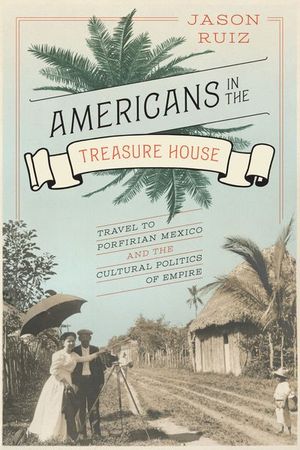Americans in the Treasure House
Published by University of Texas Press
This study of American travel to Mexico from 1884 to 1911 examines how the influx of tourists and speculators altered perceptions of US influence.When railroads connected the United States and Mexico in 1884, travel between the two countries became easier and cheaper. Americans developed an intense curiosity about Mexico, its people, and its opportunities for business and pleasure. Indeed, so many Americans visited Mexico during the Porfiriato—the long dictatorship of Porfirio Díaz—that observers on both sides of the border called it a “foreign invasion.” This, as Jason Ruiz demonstrates, was an especially apt phrase. In Americans in the Treasure House, Ruiz argues that this influx of travelers helped shape American perceptions of Mexico as a logical place to exert its cultural and economic influence. Analyzing a wealth of evidence ranging from travelogues and literary representations to picture postcards and snapshots, Ruiz shows how American travelers constructed an image of Mexico as a nation requiring foreign intervention to reach its full potential. Most importantly, he relates the rapid rise in travel and travel discourse to complex questions about national identity, state power, and economic relations across the US–Mexico border.
BUY NOW FROM
COMMUNITY REVIEWS
